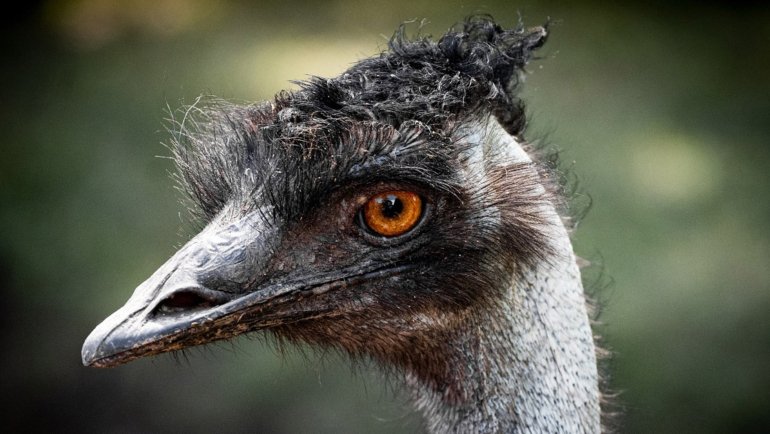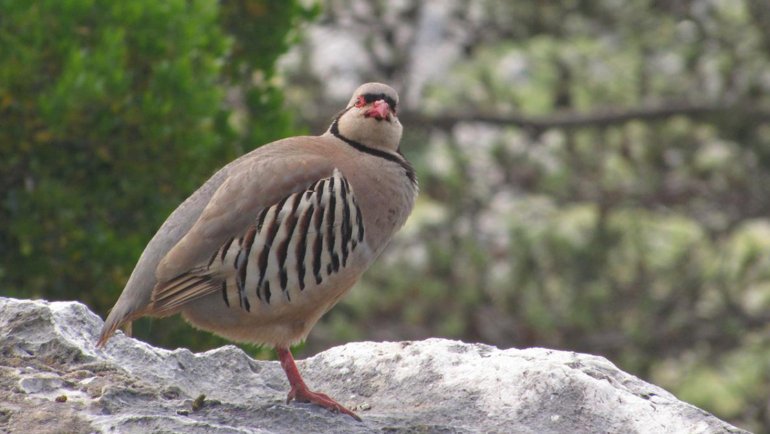Nestled in the heart of South America, Paraguay, a land of rich history and vibrant culture, reverberates with the spirit of its native flora and fauna. One such emblematic creature that threads through the tapestry of Paraguayan landscapes is the nimble Pampas fox.
Did you know that, despite its name, the Pampas fox is not exclusive to the Pampas region? This versatile animal has a knack for adapting to varied environments, from dry shrublands to lush forests. Journey with us as we delve deeper into the life and lore of Paraguay’s national animal.
Quick Info About The Pampas Fox
| Scientific Name: | Lycalopex gymnocercus |
| Average Size: | 20-28 inches (50-70 cm) long, excluding the tail; Tail: 11-13 inches (28-33 cm) |
| Average Weight: | 5.5-8.8 lbs (2.5-4 kg) |
| Average Lifespan: | 8-12 years |
| Geographical Range: | Central South America, spanning from southeastern Brazil to northern Argentina, including Paraguay and Uruguay |
| Habitat: | Grasslands, pampas, dry shrublands, and forests |
| Conservation Status: | Least Concern (IUCN Red List) |
Meet The Pampas Fox, National Animal of Paraguay
Characterized by its slender body and bushy tail, the Pampas fox is an exquisite representation of Paraguay’s wildlife. With a predominantly grayish-brown coat, a black-tipped tail, and reddish markings on the legs and mouth, it possesses a blend of colors that allow it to blend seamlessly into its environment.
Males are typically slightly larger than females, though the difference is subtle and may not be immediately noticeable to the untrained eye.
A nocturnal creature, the Pampas fox is primarily active during the twilight hours, using its keen senses to hunt and navigate its surroundings. Its diet is opportunistic, comprising rodents, birds, fruits, and insects, making it an omnivore. Being an intermediary in the food chain, while it preys on smaller creatures, it must also be vigilant of larger predators like jaguars and pumas.
The Pampas fox plays a significant role in maintaining the ecological balance. By controlling the populations of smaller herbivores and insects, it aids in preserving the health and diversity of the grasslands and forests it inhabits.
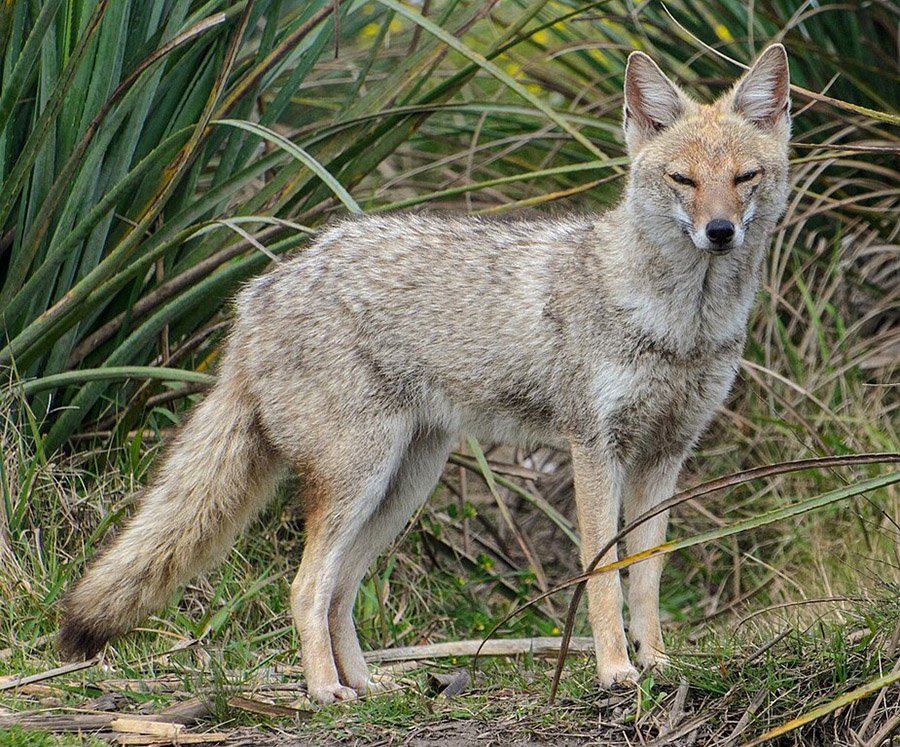 Source: Wikimedia Commons
Source: Wikimedia CommonsWhere Does The Pampas Fox Live?
In Paraguay, the Pampas fox primarily dwells in the vast Gran Chaco region, a diverse landscape of dry forests, wetlands, and savannahs. This adaptable animal is equally at home in other parts of its geographical range, ranging from the open grasslands and pampas of Argentina and Uruguay to the dry shrublands and deciduous forests of southeastern Brazil.
The climate within its range can vary. The Gran Chaco, for example, experiences semi-arid conditions with pronounced wet and dry seasons. In contrast, other regions like southeastern Brazil can be more humid and forested. Regardless of the region, the Pampas fox has demonstrated a remarkable ability to adjust to different habitats, showcasing its resilience and versatility.
Why and When Did The Pampas Fox Become The National Animal of Paraguay?
The Pampas fox’s designation as the national animal of Paraguay is rooted in both cultural admiration and the animal’s prevalence in the country’s ecosystems. While there isn’t an exact documented date marking its establishment as the national animal, the Pampas fox has long been a representative of the vast landscapes of Paraguay, especially the Gran Chaco region.
Historically, various indigenous groups in Paraguay have held the Pampas fox in high regard, often associating it with qualities of cunning, adaptability, and survival. Some indigenous myths even speak of the fox as a messenger or mediator between the heavens and the earth, emphasizing its spiritual significance.
Over the years, there have been debates surrounding wildlife conservation in Paraguay, especially concerning habitat loss due to deforestation and agriculture. The Pampas fox, as a symbol of wild Paraguay, often finds itself at the center of these discussions, serving as a reminder of the nation’s responsibility to protect its native species and habitats.
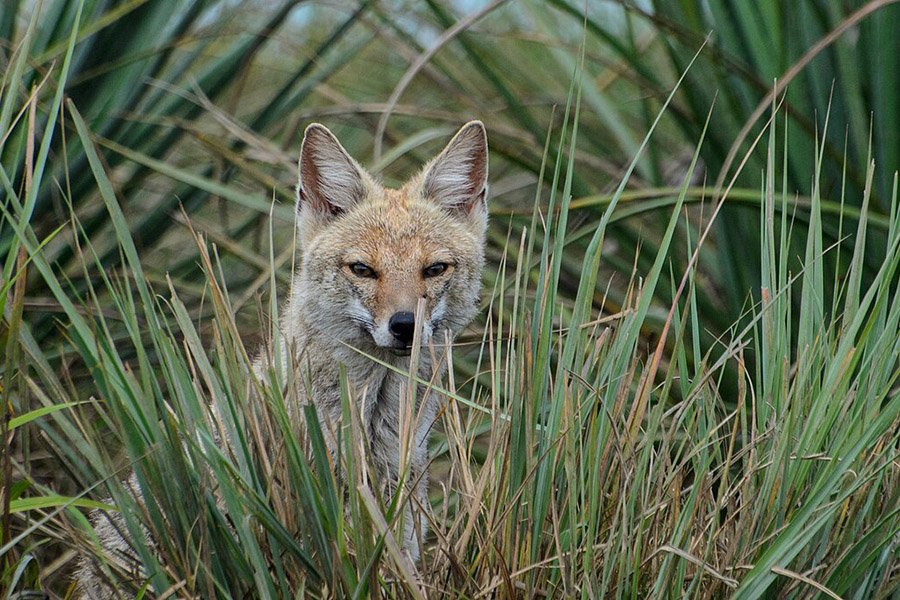 Source: Wikimedia Commons
Source: Wikimedia CommonsWhere is The Pampas Fox Featured in Paraguay?
While the Pampas fox isn’t prominently displayed on national symbols like the flag or banknotes, its importance is felt in the nation’s collective consciousness.
It often appears in cultural and educational contexts, such as in school curricula where children learn about the country’s biodiversity. Additionally, the Pampas fox has been featured on postage stamps, symbolizing its national significance.
Locally, it’s not uncommon to find references to the Pampas fox in Paraguayan literature and folklore. While its name hasn’t been used to denote the currency or major landmarks, the reverence for this creature is evident in the continued efforts to study and conserve it within the nation’s borders.
Names of The Pampas Fox
The Pampas fox, widely recognized by its scientific name, Lycalopex gymnocercus, goes by several common names depending on the region and language. Some of the names include:
- Zorro de las Pampas in Spanish, directly translating to “Fox of the Pampas.”
- Azara’s fox, named after the Spanish naturalist Félix de Azara.
- In some indigenous languages of Paraguay, it might be called by different names
Is The Pampas Fox Endangered?
As of the most recent evaluations, the Pampas fox is listed as Least Concern by the International Union for Conservation of Nature (IUCN). This means that, at present, it is not immediately threatened with extinction.
However, like many wildlife species, the Pampas fox faces threats from habitat loss due to agricultural expansion, urbanization, and deforestation. Some foxes also suffer due to hunting, both for their pelts and because they are sometimes seen as pests by farmers.
Conservation efforts in Paraguay primarily focus on habitat preservation and creating awareness about the importance of biodiversity. Some regions have set up protected areas where hunting and deforestation are controlled to ensure the survival of native species, including the Pampas fox.
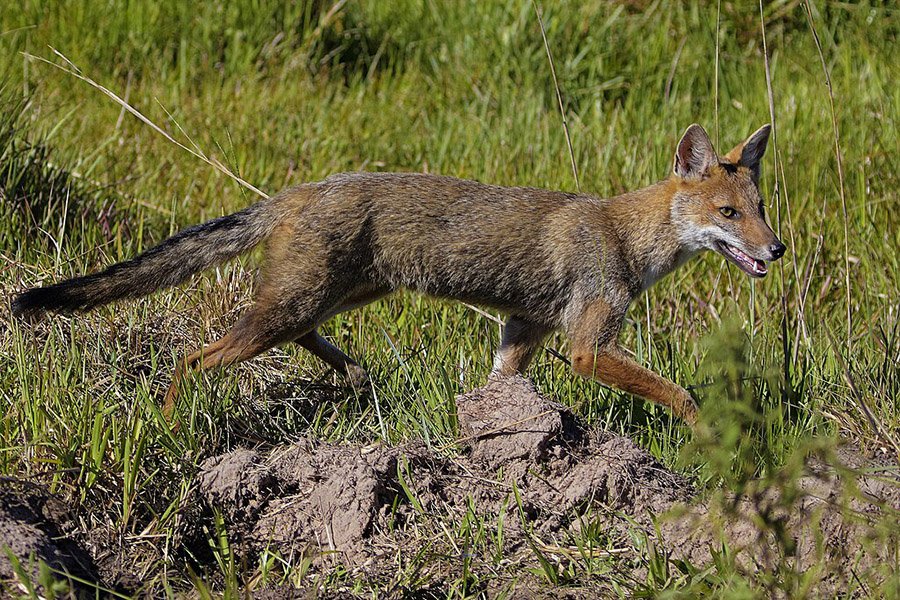 Source: Wikimedia Commons
Source: Wikimedia CommonsInteresting Facts About The Pampas Fox
- Dietary Adaptability: The Pampas fox has an omnivorous diet, feeding on small mammals, birds, insects, fruits, and plants. This varied diet allows it to survive in diverse habitats.
- Monogamous Creatures: Pampas foxes are typically monogamous, with pairs forming long-lasting bonds and often hunting and raising their young together.
- Nocturnal Behavior: They are primarily nocturnal, using the cover of night to hunt and explore, although it’s not rare to see them active during the day.
- Distinctive Tail: One of its most distinctive features is its bushy tail, which is often tipped with black and accounts for nearly half of its total length.
- Role in Ecosystem: The Pampas fox plays a crucial role in controlling populations of rodents and other small creatures, helping to maintain a balanced ecosystem.
- Cultural Significance: In some local tales and myths, the Pampas fox is often depicted as a clever and cunning character, similar to the role of the fox in many global fables.
- Adaptability: The Pampas fox has shown a remarkable ability to adapt to changing landscapes, including areas transformed by human activities, such as farmland.
Other Beautiful Animals Native To Paraguay
- Jaguar (Panthera onca): Once found throughout South America, this majestic big cat now resides in select areas, with the Paraguayan Pantanal being one of its strongholds.
- Giant Anteater (Myrmecophaga tridactyla): With its distinctive snout and long tongue, this mammal is a specialized insectivore, primarily consuming ants and termites.
- Chacoan Peccary (Catagonus wagneri): Native to the Gran Chaco region of Paraguay, Bolivia, and Argentina, this pig-like mammal was only described to science in the 1970s and is a living testament to the vast biodiversity of the area.
- Hyacinth Macaw (Anodorhynchus hyacinthinus): The world’s largest flying parrot, this brilliant blue bird, can be found in the Pantanal region of Paraguay.
- Maned Wolf (Chrysocyon brachyurus): Neither a wolf nor a fox, this long-legged canid is native to the grasslands of South America and can be spotted in Paraguay’s national parks.
Frequently Asked Questions
Why is the Pampas Fox the national animal of Paraguay?
The Pampas fox symbolizes the rich biodiversity of Paraguay, especially the vast pampas region. It represents the wild spirit and natural beauty of the country.
Is it legal to hunt the Pampas Fox in Paraguay?
While the Pampas Fox is not endangered, there are regulations in place regarding hunting. Why would you want to hunt such a beautiful creature, anyway? 🙂
How do the Pampas Fox and the Maned Wolf differ?
While both are canids and share some resemblance, the Maned Wolf is taller with longer legs and a more reddish coat. They inhabit different ecosystems, with the Maned Wolf preferring wetter grasslands.
Does Paraguay have any national parks or reserves to see the Pampas Fox in the wild?
Yes, Paraguay boasts several national parks and protected areas where you can potentially spot the Pampas Fox in its natural habitat. The Ñacunday National Park and the Defensores del Chaco National Park are a couple of notable ones.
Are there any cultural or local stories in Paraguay related to the Pampas Fox?
Similar to many cultures worldwide, local tales in Paraguay often depict the fox as a clever and cunning character. These stories emphasize the fox’s ability to outsmart larger and stronger animals through its intelligence.


